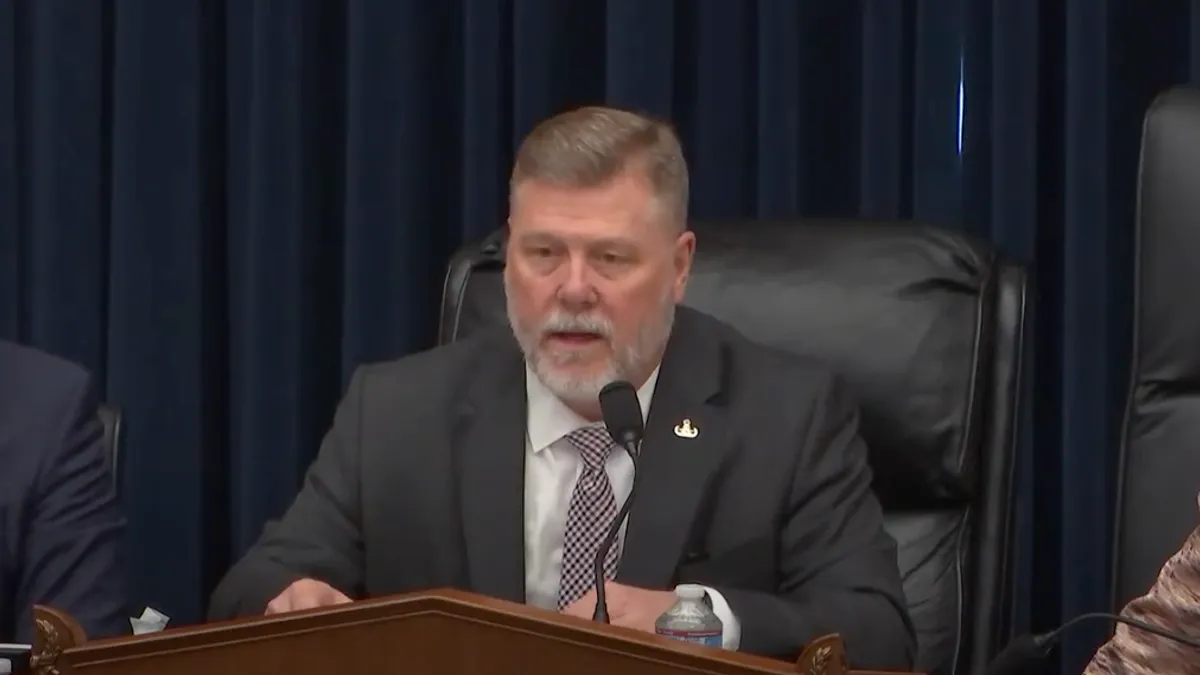Dive Brief:
- Federal lawmakers, transit industry experts and labor union representatives debated public transit costs, contracting, the value of microtransit and autonomous transit operations in a June 13 hearing of the House Committee on Transportation and Infrastructure subcommittee on highways and transit.
- Experts from the transit industry and labor unions called for more federal funding for operations. Others recommended ways that transit agencies could adapt to changes in ridership such as schedules that provide more off-peak and weekend service.
- U.S. Rep. Rick Crawford, R-Ark., noted that while transit ridership has recovered to 79% of pre-pandemic levels, that “still means that about one out of every five revenue-generating riders from before the pandemic has not returned to regular use of the service.”
Dive Insight:
Two main viewpoints on the role of public transit in the U.S. emerged during the hearing, which focused on declines and changing patterns in ridership and the resulting decrease in revenue caused by the pandemic.
One is that public transit is “an essential service,” said M.J. Maynard, CEO of the Regional Transportation Commission of Southern Nevada, speaking on behalf of the American Public Transportation Association. Conversely, Marc Scribner, senior transportation policy analyst at the libertarian Reason Foundation, said that although transit is vital for those who can't afford private vehicles, it's still “a niche mode of passenger transportation."
Maynard said that public transit agencies have adapted to post-pandemic changes in commuting patterns due to hybrid and remote work arrangements by addressing specific community needs, such as riders who commute during off-peak hours, those with mobility disabilities and those in areas underserved by transit. But she added that inflation increased costs for transit agencies and a tight labor market “led agencies to increase compensation to attract and retain workers.”
Laura Hendricks, CEO of transit operator Transdev U.S., speaking on behalf of the North American Transit Alliance, explained that more than two-thirds of U.S. transit agencies engage with private-sector companies such as Keolis, MV Transportation and RATPDev, to operate all or a portion of their transit service.
She noted that some transit agencies have begun to offer microtransit service, explaining that microtransit is similar to ride-hailing but involves shared rides on a shuttle bus.
“Microtransit can bring riders to fixed-route service, overcoming the first- and last-mile hurdle,” she said. She noted that microtransit is more efficient than fixed-route service in places with less density or demand but less efficient in dense areas, citing information from the National Academy of Sciences.
Greg Regan, president of the AFL-CIO’s Transportation Trades Department, disagreed, saying that even the worst-performing bus routes are more cost-effective than microtransit. “These services have proven more expensive on a per-passenger basis compared to traditional fixed-route bus services,” he said.
Regan also expressed concerns that transit agencies “have been increasingly lured” by autonomous vehicle companies, adding that the technology is “completely unproven in any context, let alone public transit.” Regan urged “a renewed commitment to providing stable, flexible, and sufficient funding for transit operations.”












